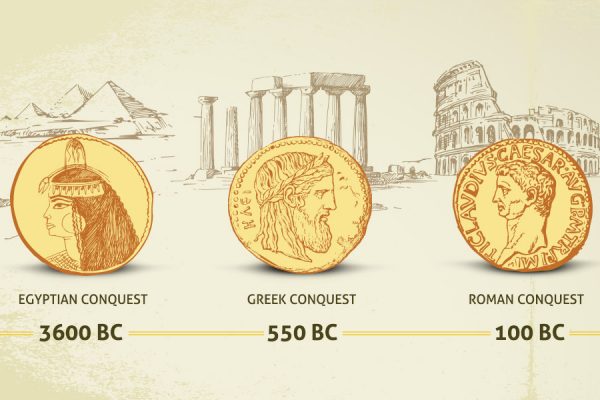Within the three investment categories, gold comes in a variety of different products that can all have different value and investment benefits.
Investment gold comes in the form of bars and coins, both of which have different advantages and disadvantages. For coin investors you then need to get into the difference between bullion and numismatic or collectible gold coins.
When dealing with jewelry, the types of gold products available are usually related to the purity of the gold used and whatever other metals might have been used in the alloy mix.
Understanding each type of product is critical when deciding how to proceed with your investment.
BULLION
COINS
Smaller forms of bullion, usually the size of a 50 cent piece and ideal for private ownership while keeping on one’s physical property.
Coins are easy to purchase and are difficult to counterfeit. You also get a small collectability factor that doesn’t come with gold bars or plates. Gold coins purchased as an investment are easier to keep at home or in a safe and are considered more reliable for resale because of a reduced counterfeit suspicion.

BARS
Gold bars are usually used for larger investments because their larger size and weight and are often kept at a bank or financial institution as opposed to someone’s home. However there are smaller sizes available, and gold bars carry the lowest premium over spot price, meaning you’ll likely get the better return on your investment.
On the other hand, bars are far easier to counterfeit than coins and are often more difficult to sell or trade as a result. You’ll need to be able to verify the authenticity of your bars and make sure you have a way to impart that verification when you’re ready to sell.

JEWELRY
Though gold jewelry comes in several different forms and mixtures with other metals, the color of the gold is generally not a factor when it comes to the value of the jewelry itself. The other metals are added primarily to produce a certain aesthetic appeal.
At the same time, it is worth noting what the other metals typically are; if for nothing else to make sure you’re educated, if and when you get into a haggling situation where someone is trying to convince you that your jewelry is less valuable because of a particular metal mixture.
- White Gold: Gold alloy, usually mixed with white metals such as palladium or silver.
- Yellow Gold: Usually a mix of initially pure gold with alloy metals such as copper or zinc.
- Rose Gold: A mix of pure gold with a copper alloy, which provides the reddish or “rose” color.
NUMISMATIC

As was mentioned earlier, numismatic gold usually comes in the coin form and is valued beyond its metal content for either collectible or historical significance. Individual numismatic gold coins are usually quite rare compared to bullion coins (more on the difference below).
COLLECTIBLE COINS OR ITEMS
Any item that has some element of rarity in addition to the gold content. Rare gold coins are a good example of a numismatic gold item and often hold more value than that of the gold itself.
HISTORICAL ARTIFACTS
Wartime or ancient artifacts made of gold, like collector’s items have an element of rarity that give it additional value. In the context of historical artifacts, it’s generally true that the older the object, the more value will be ascribed to it.
BULLION VERSUS NUMISMATIC COINS
Potential gold investors should note the fundamental difference between bullion and numismatic coins.
Bullion coins are purchased strictly for the purpose of investment, inflation hedge or for financial survival and have minimal historical or collectible significance outside of that purpose. Their weights are expressed in an even amount and they’re manufactured on a yearly basis for the sole purpose of investing.
Numismatic coins on the other hand are not produced in modern times and are valued more so for their rarity and collectability than their actual metal content. In many cases, numismatic gold coins might be worth more than their metal content would otherwise dictate.
Keep in mind that these coins are likely to be purchased exclusively by dealers and collectors, which means they make a poor candidate for a practical investment.
Simply put, you need to decide whether you’re interested in gold from a financial protection standpoint or as a collector.



